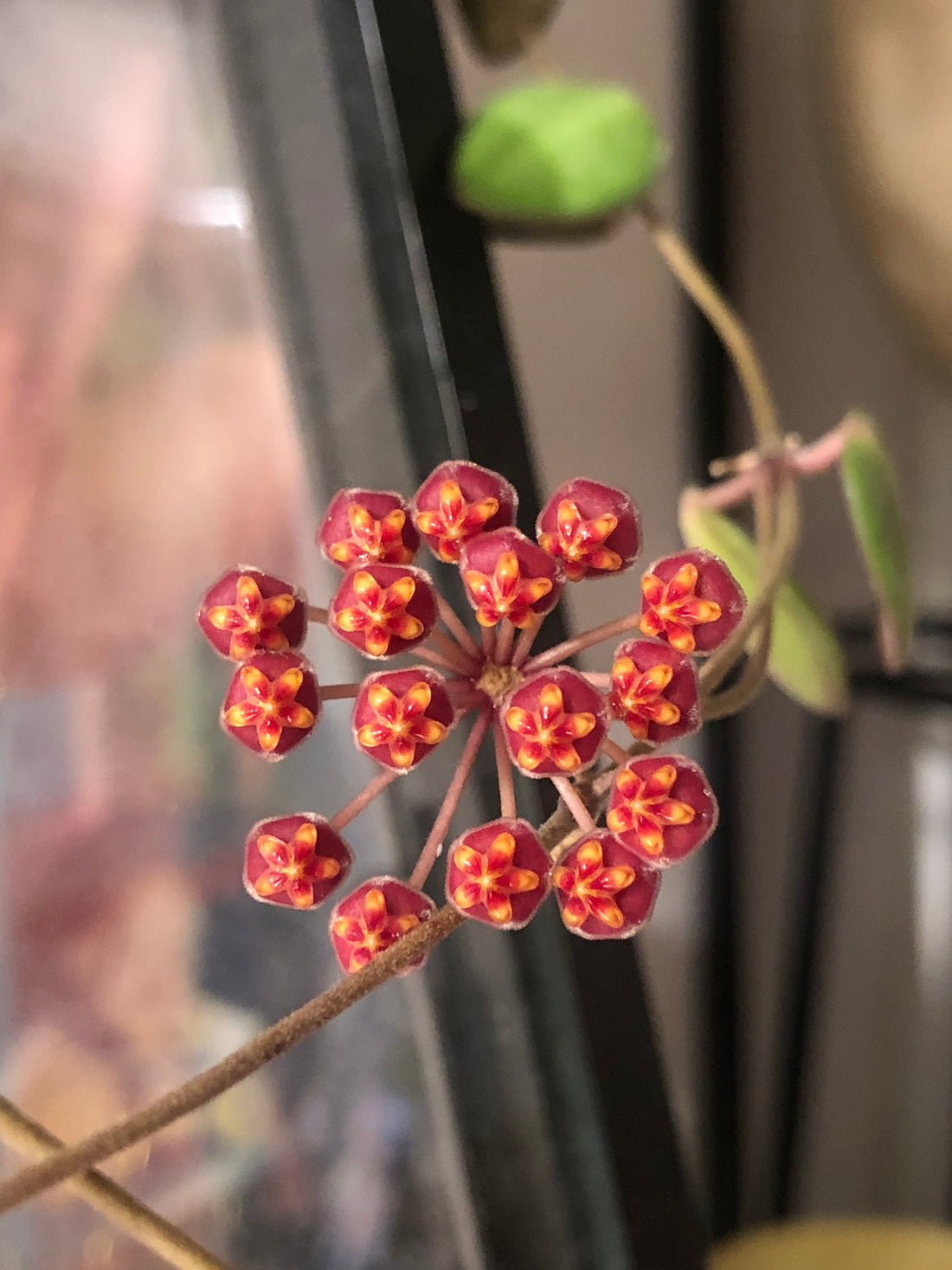
From Growth to Blooms: How I’m Encouraging My Hoyas to Flower
Share
From Growth to Blooms: How I’m Encouraging My Hoyas to Flower
If you’re a fellow Hoya grower, you probably already know: the blooms are the ultimate goal. Those clusters of waxy, fragrant flowers are what make this plant family so beloved. But getting a Hoya to bloom (especially indoors) can feel like a test of patience and luck.
The truth? It’s not just luck. Blooming takes the right combo of environment, maturity, and nutrition. In this post, I’m sharing how I support my Hoyas when they’re showing signs of bloom-readiness, and why I’ve started using GT Orchid Bloom to help them cross that finish line.
🌿 What Triggers Hoyas to Bloom?
Before we talk fertilizer, let’s break down what Hoyas actually need to bloom:
-
Age & Maturity: Most Hoyas need to be several years old or have reached a certain level of vine and root maturity before they’ll even think about blooming.
-
Good Light: Bright, indirect light (and sometimes direct morning sun) is essential for triggering blooms.
-
Consistent Conditions: Hoyas love stability- consistent watering, humidity, and temperatures help avoid stress that delays blooming.
-
Peduncles: These are the little spurs where blooms form. If you see one forming, you’re on the right track, don’t cut it off!
🧪 Why Nutrition Matters for Blooms
Once your plant is mature and getting enough light, nutrients play a critical role in whether or not it will flower.
Specifically, you want to support:
-
Phosphorus (P): Promotes flower and bud formation
-
Potassium (K): Helps with overall plant health and bloom longevity
-
Balanced Nitrogen (N): Still needed, but too much can favor foliage over flowers
If your plant is healthy but just won’t bloom, adjusting its NPK ratio may give it the nudge it needs without overfeeding.
💧 Why I Added GT Orchid Bloom to My Routine
As more of my Hoyas matured showing peduncles, longer vines, and overall established growth, I started looking for a bloom-friendly nutrient boost.
That’s when I turned to GT Orchid Bloom.
Even though it’s formulated for orchids, the nutrient profile is perfect for Hoyas that are entering bloom-ready territory. Here’s why:
-
Higher phosphorus and potassium than GT Foliage Focus
-
Still provides gentle, balanced support (not a harsh “bloom booster”)
-
Compatible with soilless growing setups like coco husk and LECA
It’s not about “forcing” flowers, it’s about giving mature plants what they need to shift from growing to reproducing.
🧪 How I Mix GT Orchid Bloom Into My Routine
My baseline has always been 2 capfuls of GT Foliage Focus per gallon of water.
Now, I still use that as the base, and I simply add:
+ 1 capful of GT Orchid Bloom per gallon
This keeps nitrogen consistent for leaf health while introducing just enough extra phosphorus and potassium to encourage blooming in ready plants.
How often:
-
Every 1–2 weeks during the active growing season (spring–early fall)
-
I always flush with plain water every few weeks to prevent salt buildup
-
I monitor growth closely and hold off on Orchid Bloom if a plant isn’t ready
🚫 When I Don’t Use Orchid Bloom
Not all Hoyas are ready for bloom support, and pushing them too early can backfire.
I don’t use GT Orchid Bloom on:
-
Freshly rooted cuttings
-
Young Hoyas still developing roots and foliage
-
Plants recovering from stress, pests, or repotting
Those plants still need more nitrogen and foundational care. For them, GT Foliage Focus continues to be all they need.
💭 Final Thoughts
Encouraging Hoya blooms takes time, patience, and a lot of observation. GT Foliage Focus helped my plants grow strong, healthy, and rooted. Now that some are ready, GT Orchid Bloom is helping support their next phase, flowering.
If your Hoyas are mature, thriving, and stubbornly refusing to bloom, adjusting your nutrient mix might be the gentle push they need.
Here’s to peduncles, patience, and petals! 🌸
